I recently acquired a California juniper with two approach grafts. The grafts were struck to change the foliage from California juniper to shimpaku juniper.
At first glance, it looked like the grafts had both taken. The key indicator is when the branch swells past the graft union.
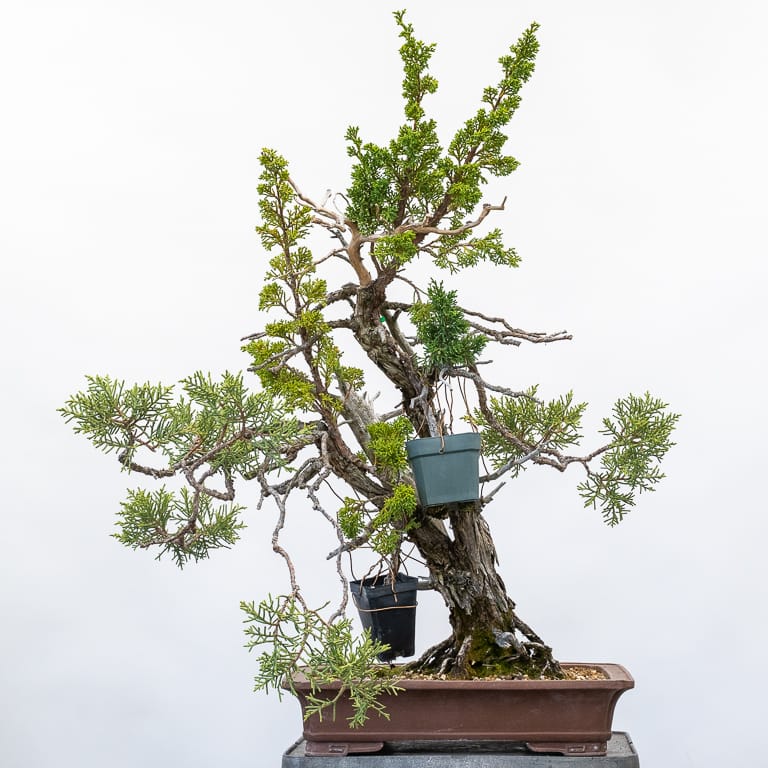
California juniper with two approach grafts
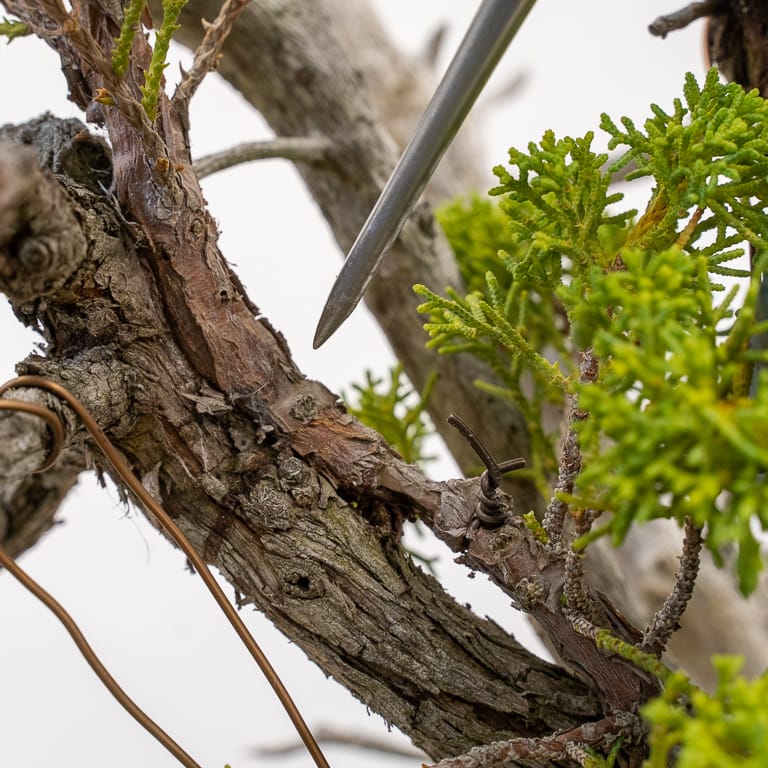
Swelling past the graft union
The graft aftercare had been good. At a spot just below the union, the live bark had been incrementally cut away.
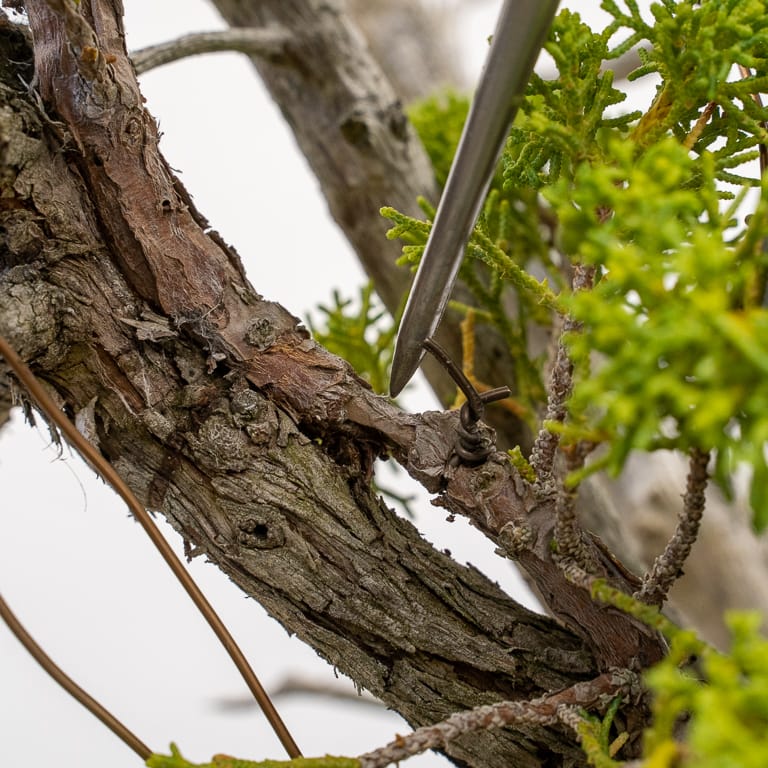
Dead wood where the lifeline had been removed
There is also a tourniquet below the union to further restrict resources returning to the roots.
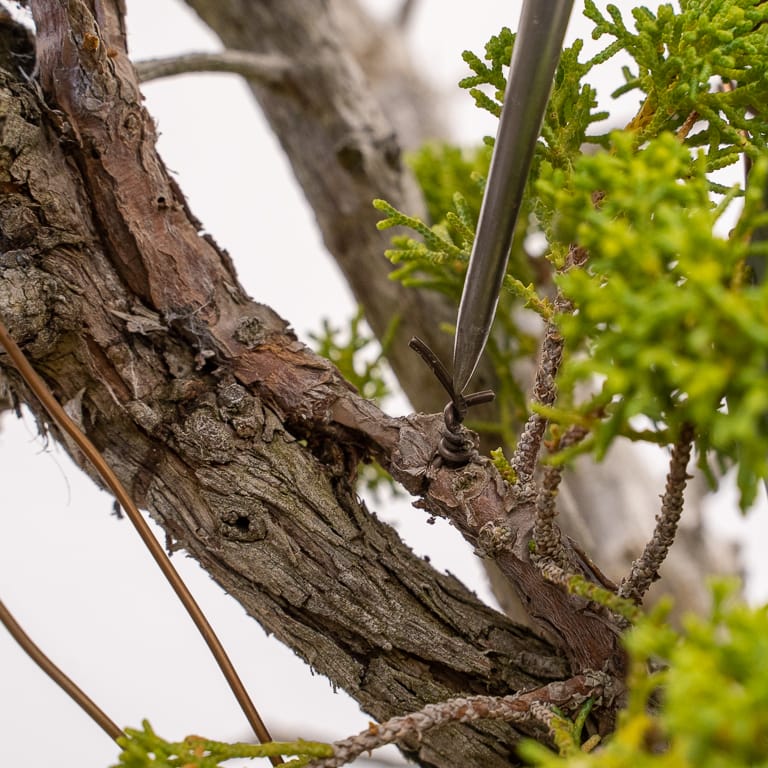
Aluminum wire tourniquet
Looking from the other side of the graft, I found a small strand of lifeline.
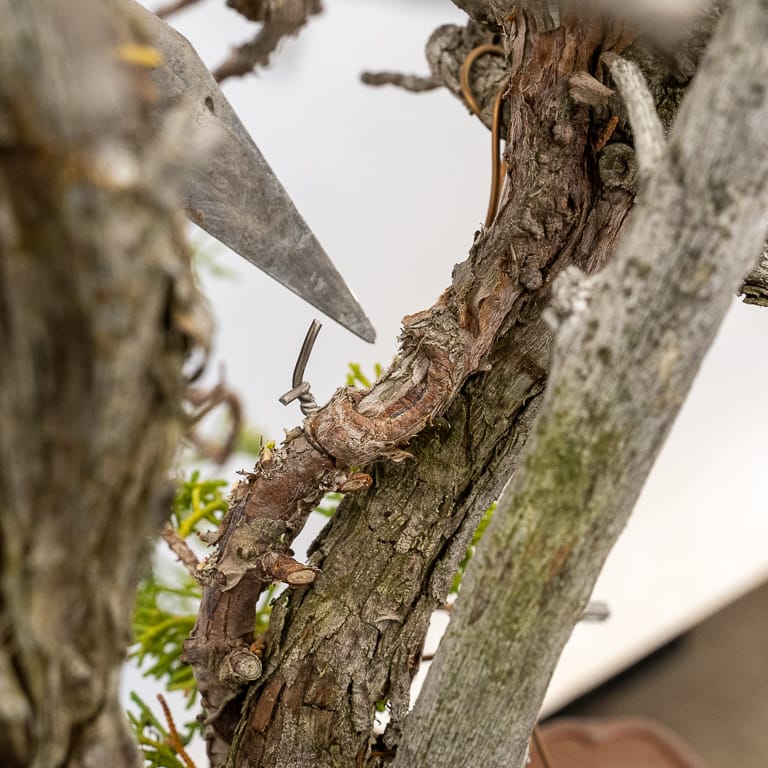
Sliver of remaining lifeline
I cut into it with a grafting knife to make it more narrow, but cut all the way through it on the first pass as it was very slender.
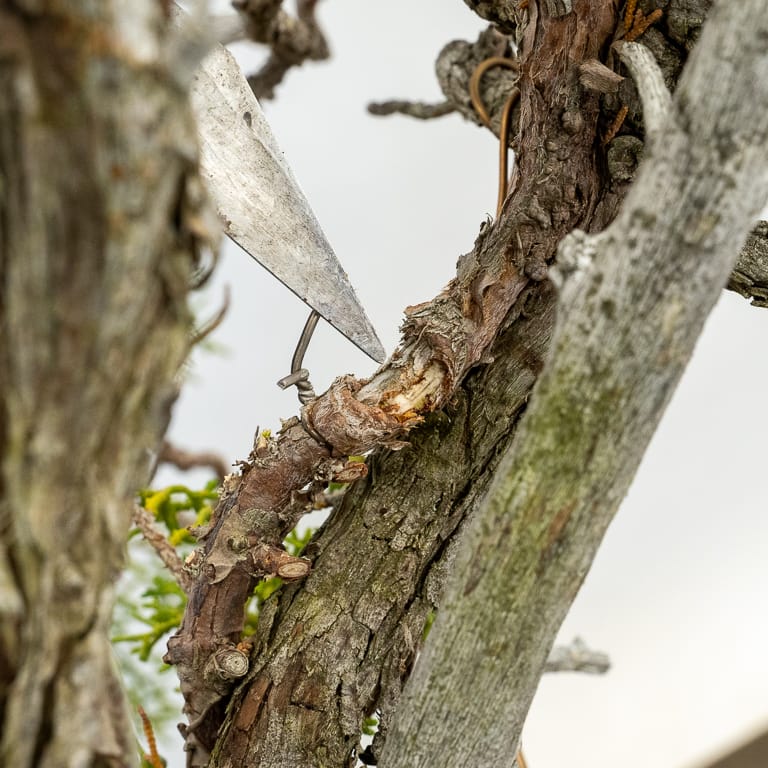
The last strand of lifeline
As there was so little lifeline left to support the grafted foliage, I separated the roots and moved on to the second approach graft.
There was no remaining lifeline on this graft so I completely cut it. This left a short stub.
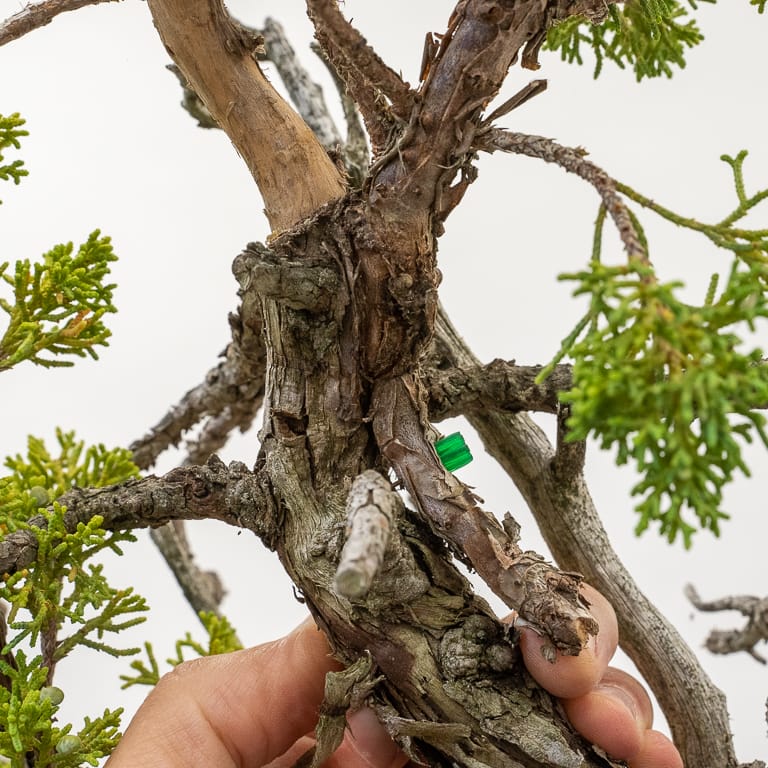
Stub left after removing the roots
I cut the stub just below the union and treated it with cut paste to promote callus formation.
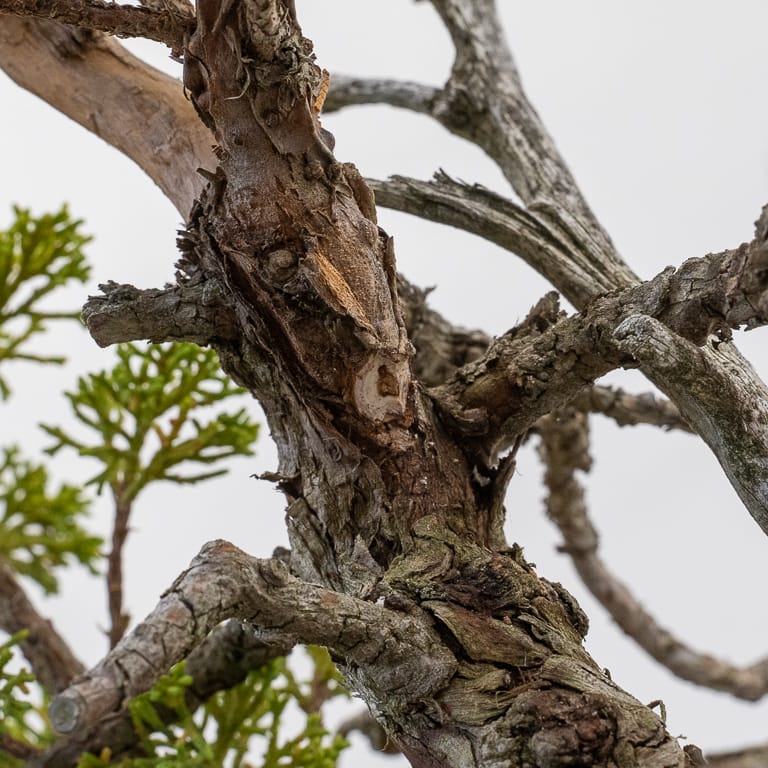
After removing the stub
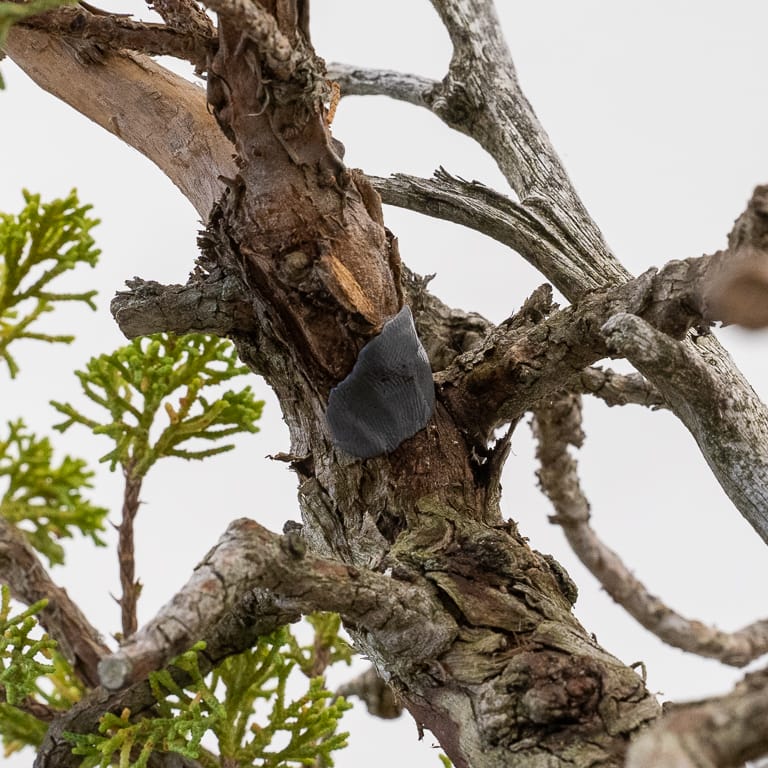
After sealing the wound with cut paste
Here’s the tree after removing the roots from both approach grafts.
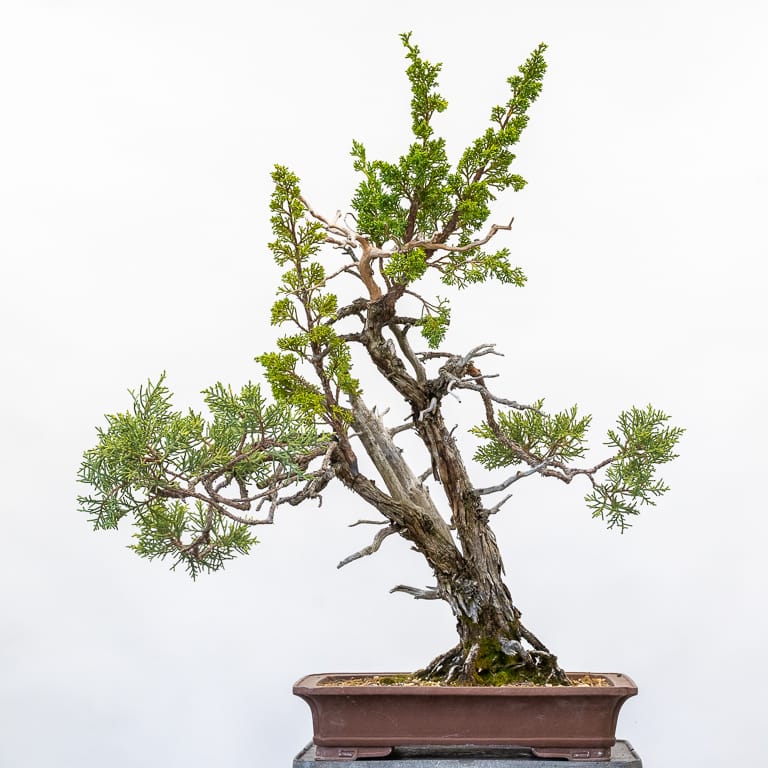
Grafted California juniper – 28″
As you can see, there are still two branches with California juniper foliage. I’ll leave these for now as I may make additional grafts at the base of these branches to complete the transformation from California juniper to shimpaku juniper.
I’ll let the new branches grow some more before wiring them into place and giving the tree a new shape, likely this coming winter.
Bonsai Sale Update
Thanks to everyone who’s inquired about trees in the bonsai sale! I’ve updated the sales page and added five new items. As before, trees may be picked up in Alameda, California anytime or at the U.S. National Exhibition in Rochester, New York on September 10th.
See the new trees, including this juniper, in the Bonsai Sale!
Subscribe to Bonsai Tonight
New Posts Delivered Every Tuesday and Friday
James Scott Chadd says
i have found it important to make sure there is lots of energy pushing the graft prior to removing the native foliage. if the Calif. juniper part of the tree is removed before the Shimpaku is big enough to carry the whole tree it could be a serious problem.
Jonas Dupuich says
Good tip – thanks, Scott!
Rafi Kazi says
Thank you for another post! What season do you start your approach grafts?
Jonas Dupuich says
Thanks, Rafi! A number of times of year can work. I like early spring but have done them in summer and fall too.
Rafi Kazi says
Thanks! Appreciate your time and knowledge.
Tim V. says
From the picture showing the tree as a whole, it almost looks like the two grafts have a different color. Is this due to a difference in variety? If not, what if you add more grafts yourself later on? I would assume you will use different genetics to graft on the tree than the original owner did… does this concern you?
Btw, I’m speaking as a person who has not done a single graft in his life!
Or did one graft simply take better than the other?
All in all, that trunk is spectacular!! Beautiful movement and very natural-looking. Cant wait to see its further evolution.
Best of luck and kind regards
Jonas Dupuich says
Thanks, Tim – great questions! The best way to do approach grafts is to use young trees that were grown from cuttings that came from the same parent. I suspect that’s the case here but I don’t know for sure. The color difference is likely due to the different health of each branch – one is more anemic than the other.
For subsequent grafts I can use a scion from the current grafts once they get a bit healthier – that way the foliage will be exactly the same.